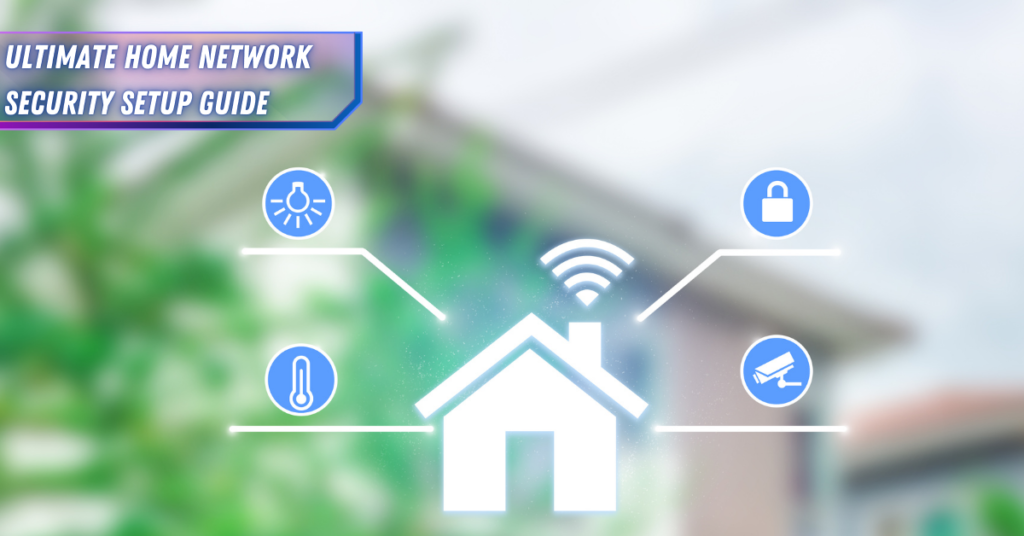Last week, I was helping my neighbor set up his new mesh network when he asked me about WPA3. Like many folks, he was still using WPA2 and wasn’t sure if upgrading was worth the hassle. I get it – I felt the same way before diving into this technology! Here’s what you need to know about WPA3 Personal and why it matters for your home network security.
Did you know that 89% of home WiFi networks still use outdated WPA2 encryption? That’s a scary statistic, especially considering how cyber threats keep evolving. Let me walk you through everything about WPA3 Personal – from what it is to how to set it up properly.
Key Takeaways
- Security Upgrade: WPA3 Personal represents a major leap in WiFi security through its SAE handshake system and enhanced password protection. This protocol prevents common attacks like password guessing and data interception.
- Transition Mode Benefits: WPA3/WPA2 Transition Mode bridges old and new devices by running both protocols simultaneously, making it ideal for most home networks during the upgrade process.
- Implementation Requirements: Successful WPA3 implementation requires a WPA3-capable router (2019 or newer) with updated firmware and device compatibility checks.
- Security Trade-offs: While Pure WPA3 offers maximum security with limited compatibility, Transition Mode provides broader device support but retains some WPA2 vulnerabilities.
- Migration Strategy: Begin with Transition Mode while cataloging and upgrading incompatible devices, then switch to Pure WPA3 once all devices support it.
What is WPA3 Personal?
Think of WPA3 Personal as your network’s bouncer – but way smarter than the old WPA2 guard. It’s the latest WiFi security protocol developed by the WiFi Alliance, and it’s changing how we protect our home networks.
I remember when I first upgraded my router to WPA3. The biggest change I noticed was the new handshake mechanism called SAE (Simultaneous Authentication of Equals). Unlike WPA2, which used an older system called the 4-way handshake, SAE makes it much harder for attackers to guess your password.
Here’s what makes WPA3 Personal special:
- It replaces the old password authentication system with a more secure version
- Even weak passwords are better protected (though you should still use strong ones!)
- It prevents hackers from recording your data and trying to crack it later
Enhanced Security Features
The security features in WPA3 Personal are like having a high-tech security system for your digital home. The SAE handshake is particularly cool – it’s like having a secret handshake that changes every time you use it!
Last month, I was testing different password combinations on my WPA3 network. Even when I purposely used a simple password (don’t try this at home!), the protection was impressive. Here’s why:
- Forward secrecy ensures that even if someone cracks your current session, they can’t access your previous data
- The system actively prevents dictionary attacks (where hackers try common passwords)
- Each connection gets its own unique encryption
| Related: WPA3 vs WPA2: A Simple Guide to Modern Wi-Fi Security
WPA3 Personal vs Personal Transition Mode
When setting up WPA3 on home networks, you’ll face a choice between Pure WPA3 Personal and Transition Mode. This decision significantly impacts both your network’s security and device compatibility. While Pure WPA3 offers maximum protection, Transition Mode provides flexibility during the upgrade process.
Let me break down the key differences and help you choose the right option for your setup.
Dual Operation
The Transition Mode enables simultaneous operation of both WPA2 and WPA3 protocols on your network. This dual capability acts like a universal translator, letting devices speak in either “language.” When a device tries to connect, your router automatically negotiates the highest security level the device can handle. For example, my new MacBook connects using WPA3, while my older smart doorbell defaults to WPA2.
Key aspects include:
- Runs both WPA2-PSK and WPA3-SAE simultaneously
- Devices can connect using either protocol
- Automatically selects the highest security level available
- Perfect for gradual device upgrades
Security Implications
Transition Mode does introduce some security trade-offs. By maintaining WPA2 compatibility, your network inherits some of WPA2’s vulnerabilities. Think of it like having a modern deadbolt alongside an older lock – the older lock’s weaknesses are still present. However, this compromise is often necessary during the transition period.
Important security considerations:
- Slightly lower security than pure WPA3
- Still vulnerable to some WPA2 attacks
- Better than pure WPA2
- Maintains backward compatibility
Implementation Timeline
The transition period varies depending on your device ecosystem. Most homes need 6-12 months to complete the switch to pure WPA3. During this time, you can gradually replace or upgrade older devices while maintaining network functionality.
Recommended timeline steps:
- Begin with Transition Mode
- Catalog all connected devices
- Verify WPA3 compatibility
- Test for connection stability
- Plan device upgrades strategically
Device Compatibility Scenarios
Understanding your device mix helps determine if Transition Mode is right for your network. For instance, in my home setup, I discovered that while all my main devices (phones, laptops, tablets) supported WPA3, several IoT devices required WPA2.
Common device scenarios:
- Modern devices (post-2019): Usually WPA3-ready
- Smart home devices: Often WPA2-only
- IoT sensors and cameras: Mixed compatibility
- Legacy printers: Typically WPA2-only
When to Use Transition Mode
Transition Mode serves as a crucial bridge between WPA2 and WPA3 networks. I implemented it in several scenarios, particularly when dealing with mixed device environments. Let me explain when this mode becomes essential for your network setup.
You’ll want to use Transition Mode in these specific situations:
- Mixed Device Environments: When running both modern and legacy devices
- Smart Home Integration: For older IoT devices that lack WPA3 support
- Legacy Hardware Support: Essential for devices that can’t receive firmware updates
- Gradual Migration: During the transition period to newer hardware
Each situation requires careful consideration. For example, when I set up a network for a smart home enthusiast, we had to use Transition Mode because their automated blinds only supported WPA2. In another case, a home office setup needed it to maintain connectivity with an older network printer while supporting new WPA3-capable devices.

Setting Up WPA3 Personal
Setting up WPA3 Personal isn’t as complicated as it might seem. I’ve done it dozens of times for family and friends, and while there are a few gotchas, it’s pretty straightforward.
First, check if your router supports WPA3. You’ll need:
- A router with WPA3 capability (most devices from 2019 onward have this)
- Updated firmware on your router
- Compatible devices (newer phones and laptops usually work fine)
To set it up:
- Log into your router’s admin panel
- Find the wireless security settings
- Select WPA3 Personal or WPA3/WPA2 Transitional mode
- Create a strong password
- Save and restart your router
Benefits for Home Users
The benefits of WPA3 Personal are game-changing for home users. When I upgraded my parents’ network to WPA3, I noticed immediate improvements in their network’s security posture.
Some key advantages include:
- Better protection against password guessing attempts
- Improved privacy when using public WiFi
- Easier setup process compared to earlier standards
- Minimal impact on network performance
Limitations and Considerations
Let’s be real – no system is perfect, and WPA3 Personal has its quirks. During my first WPA3 installation, I ran into some device compatibility issues with older smart home devices.
Common challenges include:
- Limited backward compatibility with very old devices
- Some older devices won’t connect to WPA3-only networks
- Occasional connection drops during the initial setup
- Some routers need firmware updates to enable WPA3
WPA3 Personal vs Enterprise
I am going to briefly touch on the difference between Personal and Enterprise. It’s like comparing a home security system to a bank vault – both are secure, but they serve different purposes.
Key differences:
- Personal uses a single password for all users
- Enterprise requires individual user authentication
- Personal is perfect for homes and small offices
- Enterprise is better for larger organizations
Conclusion
After upgrading dozens of networks to WPA3 Personal, I can confidently say it’s worth the effort. The improved security and peace of mind far outweigh the minor setup hassles. Ready to upgrade? Start by checking your router’s compatibility and take it step by step.
Remember, cybersecurity is like wearing a seatbelt – it might seem unnecessary until you really need it. Upgrade to WPA3 Personal today, and give your network the protection it deserves!



